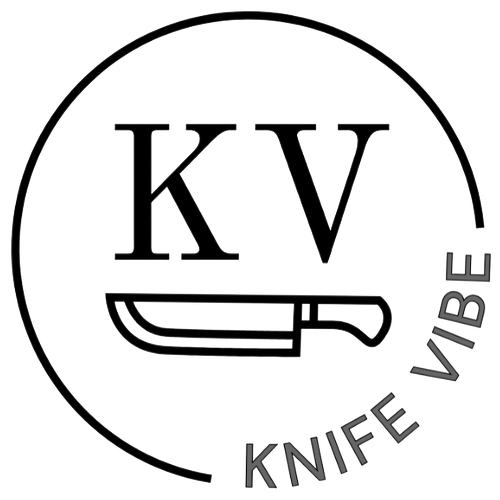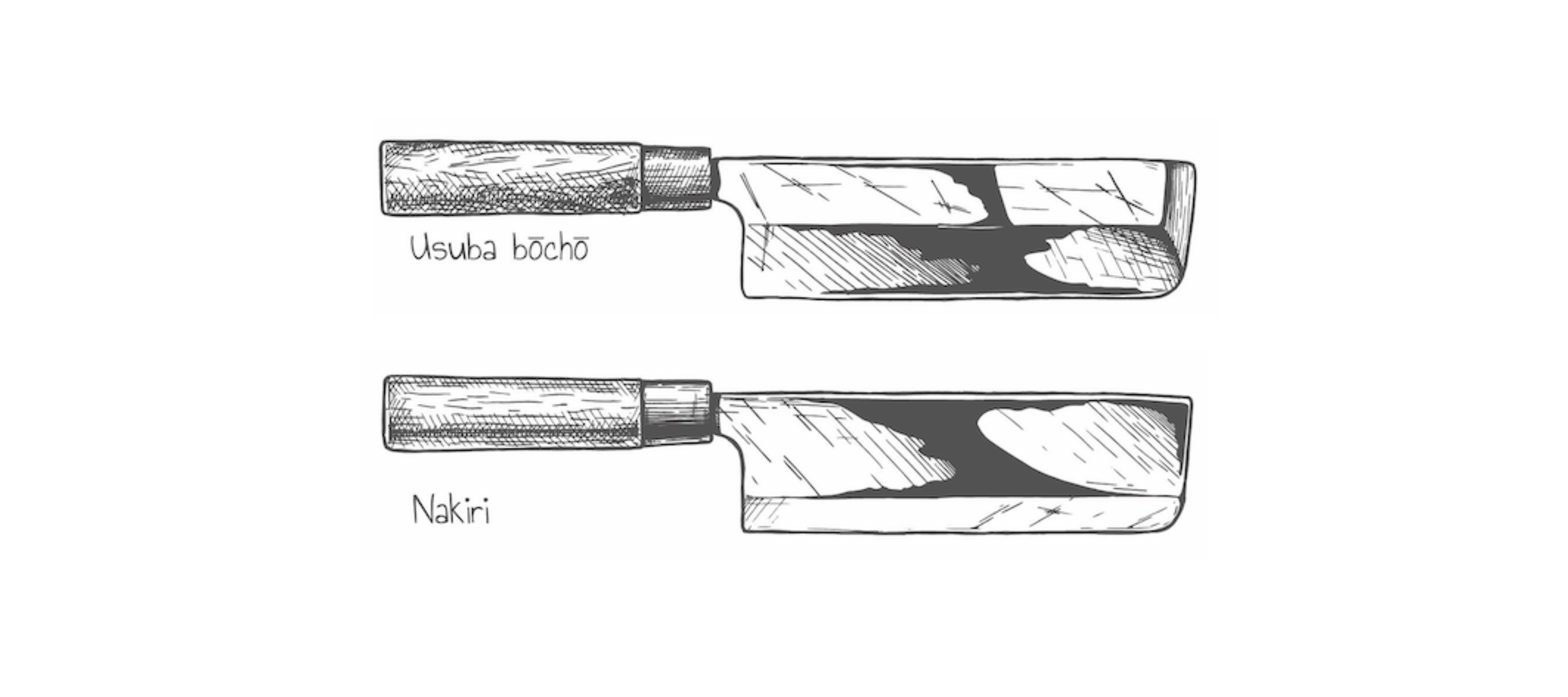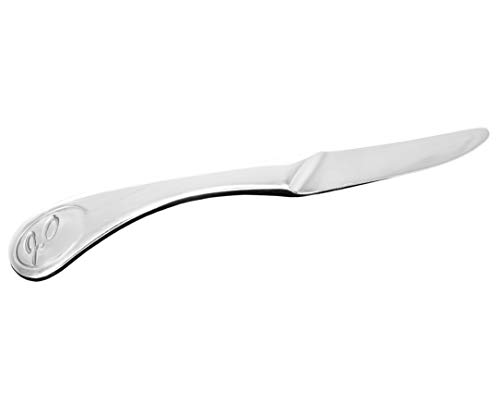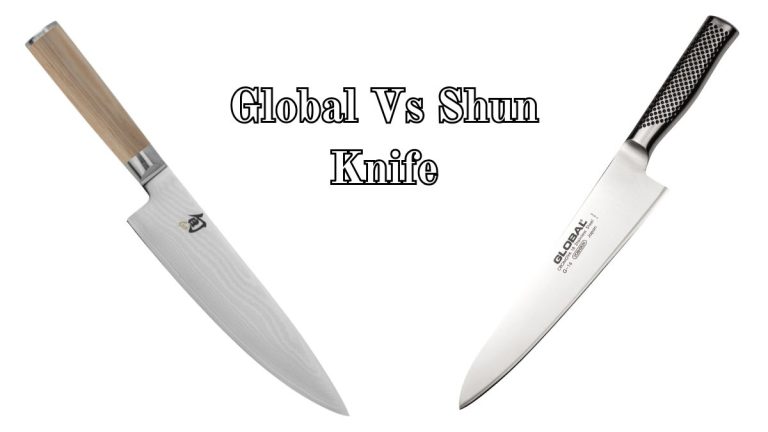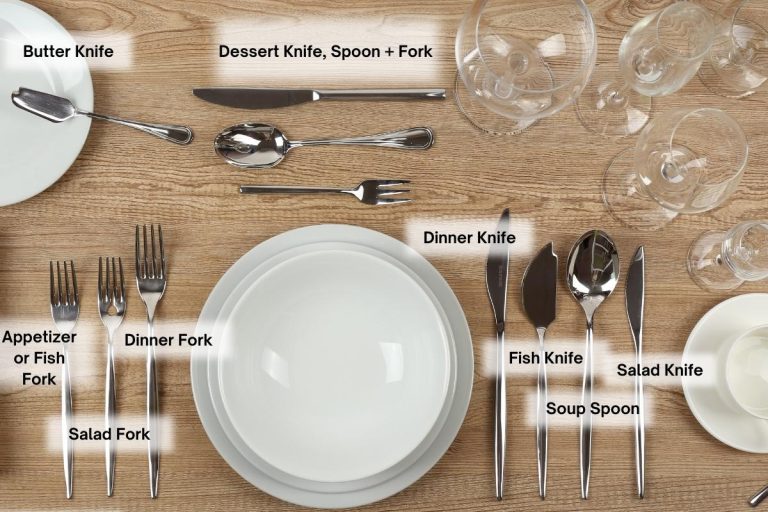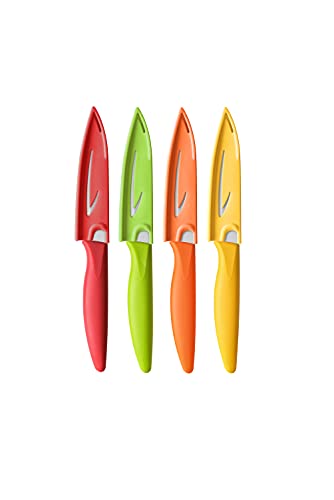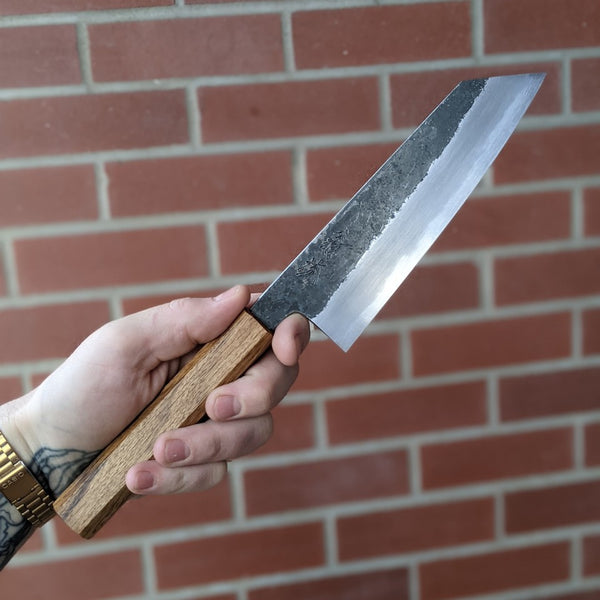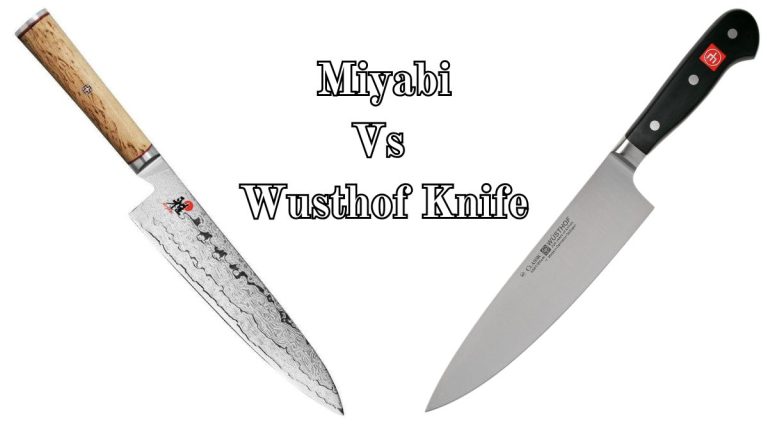Nakiri Knife Vs Usuba: Which is the Best for Precision Cutting?
When comparing kitchen knives, the Nakiri and Usuba often come up. These two Japanese knives have distinct purposes and designs.
Understanding the differences between the Nakiri and Usuba knives can help you choose the right tool for your kitchen. Both knives are traditional Japanese vegetable knives, but each has unique features. The Nakiri, with its straight edge, is perfect for precise, clean cuts on vegetables.
The Usuba, on the other hand, has a single-bevel edge, making it ideal for delicate, intricate slicing. Whether you’re a professional chef or a home cook, knowing these differences can improve your kitchen skills. This comparison will help you decide which knife best suits your cooking needs.
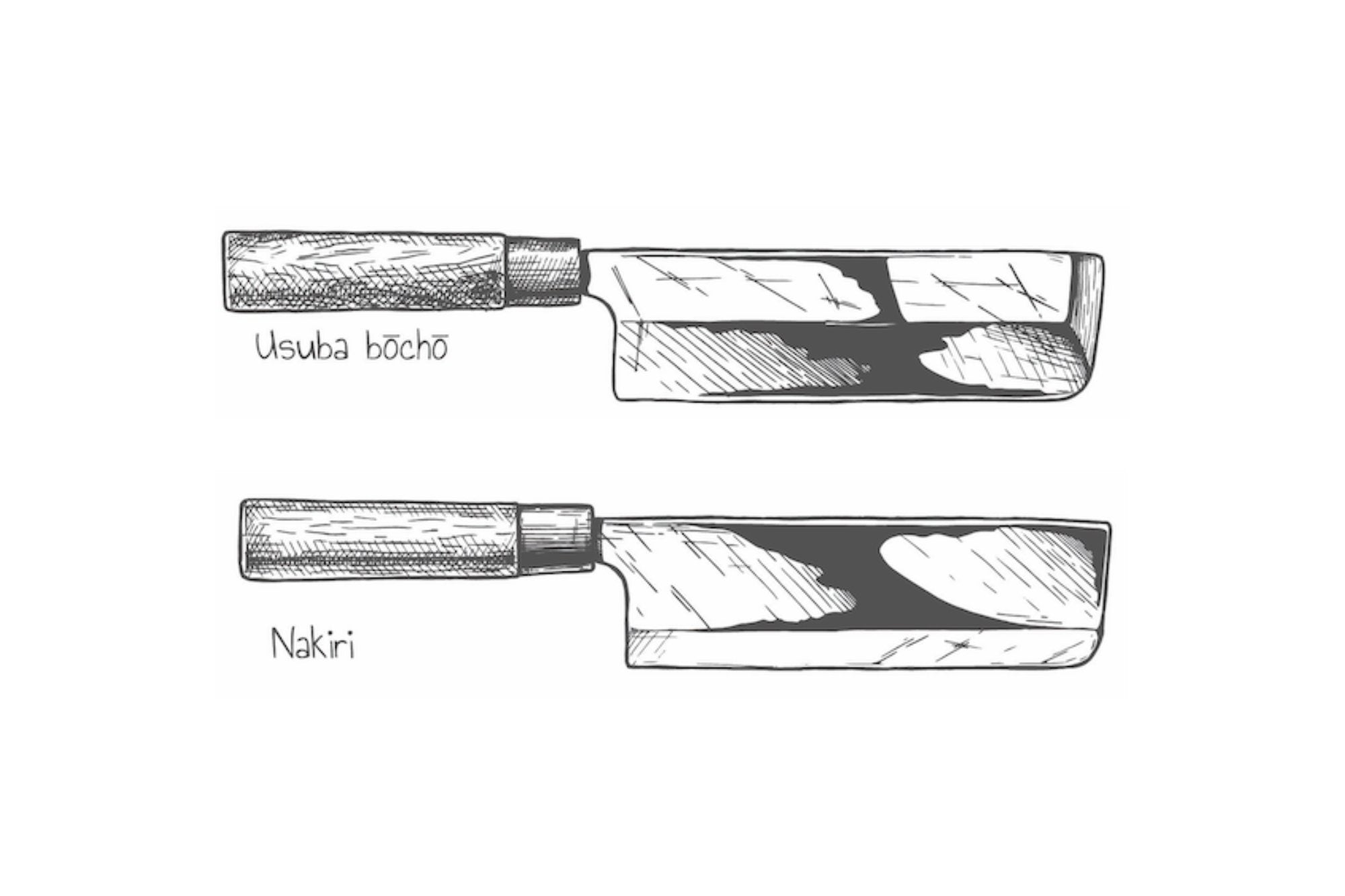
Credit: us.santokuknives.co.uk
Nakiri Knife Features
The Nakiri knife is a popular kitchen tool in Japanese cuisine. It is known for its unique design and functionality. This knife is perfect for chopping and slicing vegetables with precision. Let’s explore some key features of the Nakiri knife.
Blade Design
The Nakiri knife has a rectangular blade. The straight edge allows for easy chopping. It is ideal for cutting vegetables into thin, even slices. The blade’s width makes scooping up ingredients simple. This design is perfect for those who love cooking with fresh produce.
Material And Durability
Nakiri knives are often made from high-carbon stainless steel. This material offers excellent sharpness and edge retention. It also resists rust and corrosion, ensuring a longer lifespan. Some Nakiri knives feature a hammered finish. This reduces food sticking to the blade, enhancing the cutting experience.
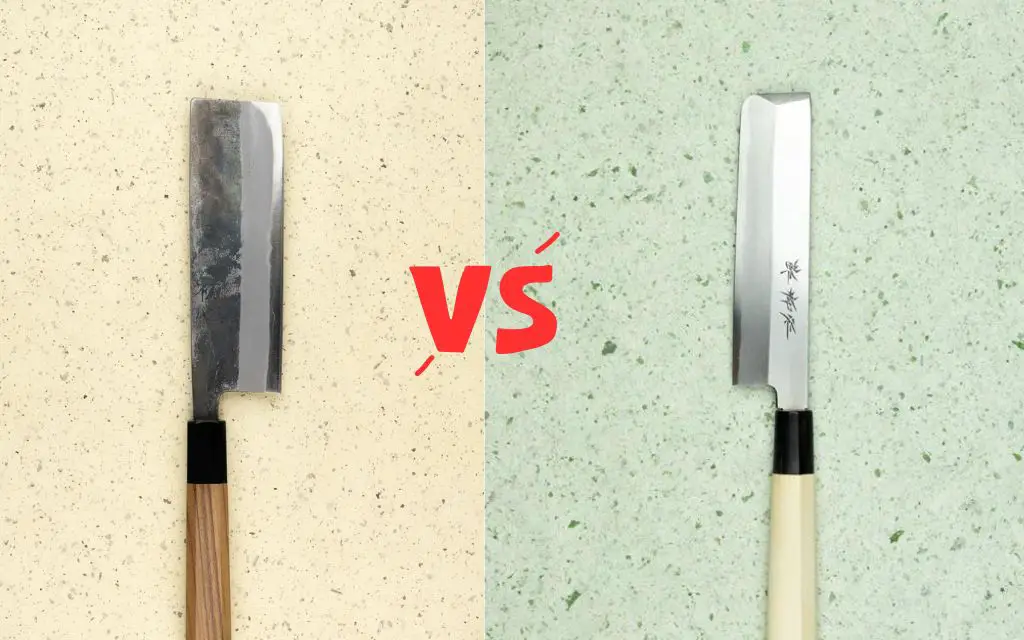
Credit: thechefdojo.com
Usuba Knife Features
The Usuba knife stands out for its precision and versatility. It is a favorite among professional chefs. This knife is known for its unique design and high-quality materials.
Blade Design
The Usuba knife has a straight edge. This makes it ideal for cutting vegetables. Its blade is single-beveled, which means one side is flat and the other is angled. This design allows for thin, precise slices. It also reduces the chance of crushing delicate ingredients.
Material And Durability
The Usuba knife is typically made from high-carbon steel. This material ensures a sharp, long-lasting edge. High-carbon steel also makes the knife easier to sharpen. It is important to care for this knife properly. Regular maintenance can prevent rust and keep the blade in top condition.
Cutting Techniques
Understanding the cutting techniques of Nakiri and Usuba knives is essential for every chef. Both knives specialize in vegetable cutting but differ in technique. Mastering these can elevate your cooking skills.
Nakiri Knife Techniques
The Nakiri knife has a straight blade edge. This design allows up-and-down chopping motions. You can cut vegetables without a horizontal pull or push. The flat edge ensures all parts of the vegetable are sliced evenly. This knife is ideal for cutting thin slices of carrots, zucchini, and onions. It excels in making quick, precise cuts.
Using a Nakiri knife requires maintaining a consistent angle. Press the blade down firmly and lift it straight back up. This technique minimizes the damage to vegetables. It keeps their texture intact. The Nakiri knife is perfect for repetitive, swift cuts. It makes meal prep faster and more efficient.
Usuba Knife Techniques
The Usuba knife is a single-bevel knife. This makes it perfect for more intricate cuts. You can use it for julienning and brunoise cuts. The Usuba knife excels in paper-thin vegetable slices. This knife is a favorite for decorative cuts and garnishes. Chefs use it to create beautiful food presentations.
Using an Usuba knife involves a push and pull motion. You push the blade forward and then pull it back. This technique ensures clean cuts with minimal effort. The single-bevel design requires practice. It is crucial to maintain the correct angle. This knife is ideal for skilled chefs who need precision.
The Usuba knife is also great for katsuramuki, or rotary peeling. This technique involves peeling vegetables into long, thin sheets. It is a skill that requires patience and practice. Mastering it can elevate your culinary presentation.
Best Uses
When deciding between a Nakiri knife and an Usuba knife, it is crucial to understand their best uses. Both knives are excellent for precise vegetable work, but they shine in different tasks. Below, we break down their best uses under specific categories.
Vegetables And Fruits
The Nakiri knife is a versatile tool for chopping a variety of vegetables and fruits. Its double-beveled edge and rectangular shape make it ideal for:
- Chopping leafy greens
- Slicing cucumbers
- Dicing carrots and potatoes
- Cutting through large fruits like melons
On the other hand, the Usuba knife excels in making very thin and precise cuts. It is particularly good for:
- Preparing garnishes
- Slicing radishes and other root vegetables
- Creating paper-thin cuts of daikon
While both knives can handle most vegetables and fruits, the Nakiri knife is more user-friendly for general use, whereas the Usuba knife is better for detailed work.
Specialty Cuts
For specialty cuts, each knife has its strengths. The Nakiri knife is great for:
- Julienning vegetables
- Making even, straight cuts
- Crushing garlic with the flat of the blade
In contrast, the Usuba knife is designed for more advanced techniques. It is perfect for:
- Katsuramuki (rotary peeling)
- Making transparent vegetable sheets
- Creating intricate patterns in vegetables
The single-beveled edge of the Usuba knife allows for these precise and decorative cuts, making it a favorite among professional chefs. Meanwhile, the Nakiri knife is more suited for everyday use and basic specialty cuts.
User Experience
Choosing the right knife can greatly impact your cooking experience. Both the Nakiri and Usuba knives are popular in Japanese kitchens. Each offers unique benefits. But how do they compare in user experience? Let’s explore.
Ease Of Use
The Nakiri knife is user-friendly. Its double-bevel edge makes it easy for both right and left-handed users. The flat blade design helps in cutting vegetables with precision. Beginners find it easy to use, thanks to its balanced weight and simple design.
The Usuba knife, on the other hand, has a single-bevel edge. This makes it ideal for right-handed users. Using it requires some skill. The knife excels in making thin, precise cuts. It is best suited for experienced cooks.
Comfort And Handling
Nakiri knives are usually lightweight. This makes them comfortable to handle for long periods. The rectangular blade shape provides a good grip. The knife feels balanced, reducing hand fatigue.
Usuba knives are heavier. Their design focuses on precision. While they offer great control, they can be tiring for extended use. The weight helps in cutting through tough vegetables. But it requires more effort to handle compared to the Nakiri.
In summary, both knives have their strengths. The Nakiri is great for ease of use and comfort. The Usuba excels in precision and control, ideal for skilled chefs. Choose based on your experience level and cooking needs.
Maintenance And Care
Proper maintenance and care are crucial for both Nakiri and Usuba knives. These traditional Japanese knives need regular attention to retain their sharpness and performance. Let’s explore the best practices for maintaining and caring for your Nakiri and Usuba knives.
Sharpening And Honing
Both Nakiri and Usuba knives require frequent sharpening to maintain their cutting edge. Use a whetstone to sharpen your knife. Follow these steps:
- Soak the whetstone in water for at least 10 minutes.
- Hold the knife at a 15-degree angle to the stone.
- Slide the knife back and forth across the stone.
- Repeat on the other side of the blade.
Honing helps keep the edge aligned. Use a honing rod to gently realign the edge. Do this before each use.
Cleaning And Storage
Proper cleaning extends the life of your Nakiri and Usuba knives. Follow these tips:
- Hand wash the knife with warm water and mild soap.
- Dry the knife immediately with a soft cloth.
- Avoid using the dishwasher, as it can damage the blade.
For storage, choose a knife block or magnetic strip. Avoid storing the knife in a drawer without protection. This prevents dulling and damage.
| Aspect | Nakiri | Usuba |
|---|---|---|
| Sharpening Frequency | Weekly | Weekly |
| Honing Frequency | Before each use | Before each use |
| Cleaning Method | Hand wash | Hand wash |
| Storage | Knife block or magnetic strip | Knife block or magnetic strip |
By following these maintenance and care tips, your Nakiri and Usuba knives will stay sharp and last longer. Keep your knives in top condition for the best performance.

Credit: knifewear.com
Frequently Asked Questions
What Is A Nakiri Knife Used For?
A Nakiri knife is primarily used for chopping vegetables. Its straight edge ensures precise cuts.
How Does An Usuba Knife Differ From Nakiri?
An Usuba knife has a single-bevel edge. It is designed for intricate vegetable work.
Which Is Better For Home Cooks, Nakiri Or Usuba?
A Nakiri knife is generally better for home cooks. It is easier to use and maintain.
Can I Cut Meat With A Nakiri Knife?
A Nakiri knife is not ideal for cutting meat. It is specifically designed for vegetables.
Conclusion
Choosing between a Nakiri and Usuba knife depends on your needs. Both knives excel in vegetable preparation. Nakiri offers ease and versatility. Usuba provides precision and traditional craftsmanship. Consider your skill level and cooking style. Beginners might prefer Nakiri. More advanced users might enjoy Usuba’s precision.
Both knives enhance your kitchen experience. Make the choice that suits you best. Happy cooking!
